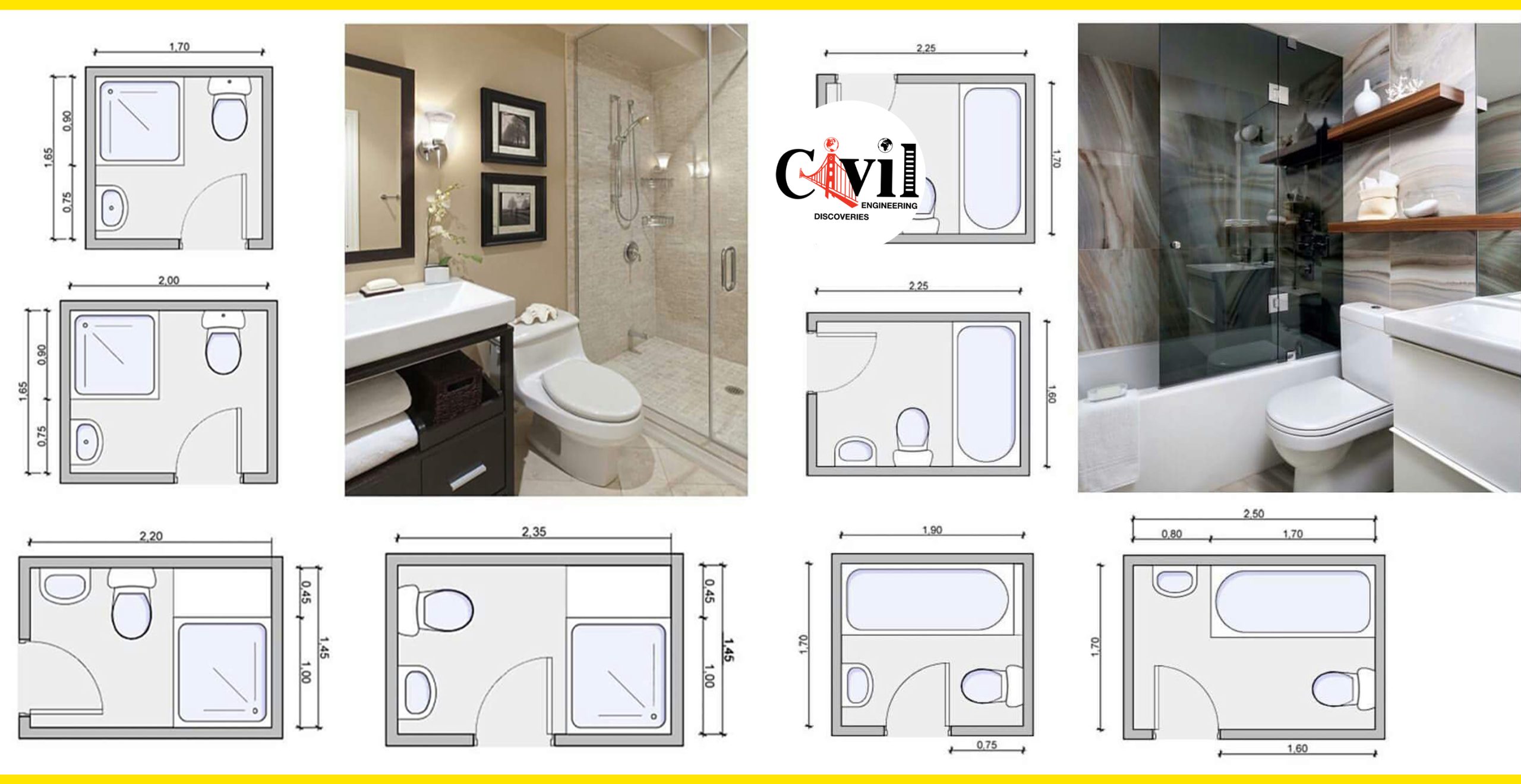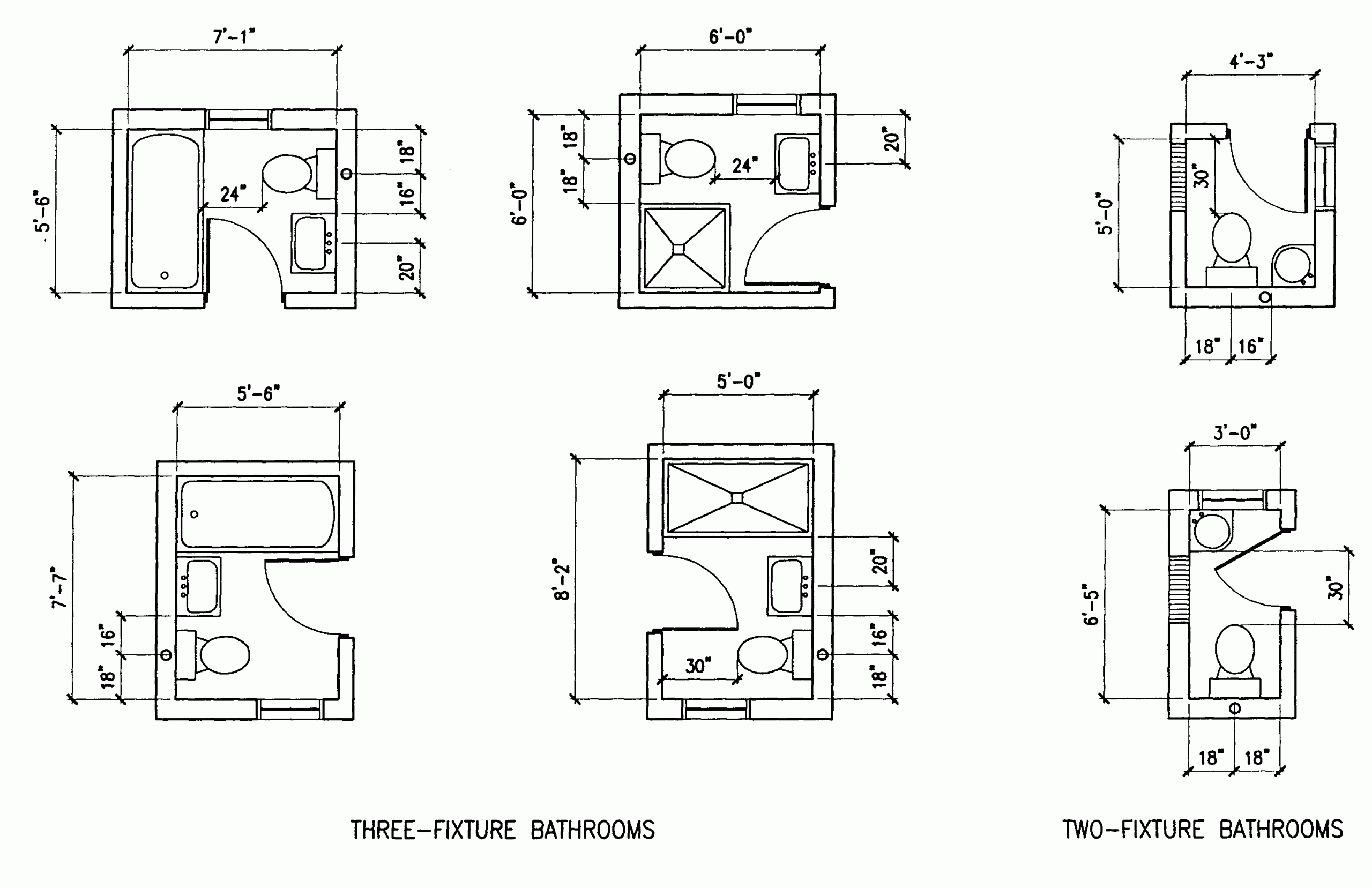Minimum Size Requirements: How Small Can An Ensuite Bathroom Be

The minimum size of an ensuite bathroom is dictated by building codes and regulations, ensuring adequate space for functionality and safety. These requirements can vary depending on location, specific building codes, and the type of ensuite bathroom.
Minimum Size Requirements for Different Types of Ensuite Bathrooms
The minimum size requirements for ensuite bathrooms can vary depending on the type of fixtures included. For example, a bathroom with a shower will have different requirements than a bathroom with a bathtub.
- Shower-only ensuite bathrooms typically require a minimum floor area of 36 square feet (3.3 square meters). This allows for sufficient space to maneuver around the shower and for any necessary fixtures.
- Ensuite bathrooms with a bathtub usually have a larger minimum floor area requirement, often around 50 square feet (4.6 square meters). This provides enough space for the bathtub, shower, and other fixtures.
It is important to note that these are just general guidelines, and specific requirements can vary significantly depending on the location and the building codes in effect. It is always recommended to consult with a local building inspector or architect to ensure that your ensuite bathroom meets all applicable regulations.
Designing a Small Ensuite Bathroom

Creating a functional and stylish ensuite bathroom in a limited space requires careful planning and strategic design choices. By incorporating space-saving techniques and maximizing storage solutions, you can transform a small ensuite into a comfortable and efficient oasis.
Space-Saving Design Strategies
Space-saving design strategies are crucial for small ensuite bathrooms, as they help to optimize the available area and create a sense of spaciousness. These strategies include:
- Compact Fixtures: Opting for compact fixtures, such as a wall-mounted toilet, a corner sink, and a smaller shower enclosure, can significantly free up floor space. These fixtures are designed to be functional while minimizing their footprint.
- Multifunctional Furniture: Utilize furniture that serves multiple purposes, such as a vanity with built-in storage or a shower bench with shelves. This eliminates the need for separate pieces and maximizes the use of available space.
- Vertical Storage: Maximize vertical space by installing shelves, cabinets, and drawers above the toilet, along the walls, or even above the door. This allows you to store items off the floor, creating a sense of openness.
- Mirrors: Mirrors can visually enlarge the space and reflect light, making the bathroom feel more spacious. Consider using a large mirror above the sink or incorporating smaller mirrors on the walls to create a sense of depth.
- Light Colors: Using light colors on the walls and floors can make the bathroom feel larger and brighter. Consider a light-colored tile or paint scheme, and incorporate accents of color through towels and accessories.
Maximizing Storage Space
Storage solutions are essential for keeping a small ensuite bathroom organized and clutter-free. Effective storage options include:
- Built-in Shelves: Built-in shelves, often found in vanities or above the toilet, provide a dedicated storage space that blends seamlessly with the bathroom design.
- Under-Sink Storage: Utilize the space under the sink by installing drawers, pull-out baskets, or shelves. This allows you to store toiletries, cleaning supplies, and other essentials out of sight.
- Wall-Mounted Storage: Wall-mounted shelves, baskets, and hooks can be used to store towels, toiletries, and other items, freeing up floor space.
- Over-the-Door Organizers: Over-the-door organizers can provide additional storage for towels, bathrobes, and other items, without taking up valuable floor space.
- Vertical Storage Towers: Slim storage towers can be placed in corners or along the walls to maximize vertical space and store items such as towels, toiletries, and cleaning supplies.
Small Bathroom Fixtures and Dimensions
The following table provides examples of small bathroom fixtures and their dimensions, compared to standard-sized fixtures:
| Fixture | Small Size | Standard Size |
|---|---|---|
| Toilet | 26.5″ x 15.5″ | 30″ x 16″ |
| Sink | 18″ x 15″ | 21″ x 18″ |
| Shower Enclosure | 32″ x 32″ | 36″ x 36″ |
Functional Considerations

In addition to the size constraints, several functional considerations are crucial when designing a small ensuite bathroom. These include ensuring proper ventilation and lighting, optimizing circulation, and creating a sense of spaciousness.
Ventilation and Lighting
Adequate ventilation is essential in any bathroom, but especially in a small ensuite, where moisture and odors can build up quickly. A well-ventilated bathroom helps prevent mold growth, mildew, and unpleasant smells.
- Exhaust Fans: Install a powerful exhaust fan that can quickly remove moisture and air. Ensure it is properly sized for the bathroom’s square footage and vented to the outside. Consider a timer or humidity sensor for automatic operation.
- Natural Ventilation: If possible, incorporate a window for natural ventilation. This can help to circulate air and bring in fresh air. Even a small window can make a difference.
- Lighting: Proper lighting is crucial for both functionality and aesthetics. Use a combination of overhead lighting and task lighting to create a well-lit space. Consider using LED bulbs, which are energy-efficient and provide bright, white light.
Creating a Comfortable and Functional Space
Small ensuite bathrooms present unique challenges in creating a comfortable and functional space. Limited square footage can make it difficult to move around freely and access fixtures easily.
- Circulation: Plan the layout carefully to ensure adequate circulation. Consider using a compact toilet or a corner shower to maximize space. Avoid placing furniture or storage units in high-traffic areas.
- Accessibility: If possible, design the bathroom with accessibility features in mind. This may include wider doorways, grab bars, and a walk-in shower. Even if not currently needed, these features can enhance the bathroom’s usability in the future.
- Storage: Storage is crucial in a small bathroom. Consider using vertical storage solutions, such as shelves, cabinets, and towel racks. Utilize the space behind the toilet or under the sink for additional storage.
Creating a Sense of Spaciousness, How small can an ensuite bathroom be
Design techniques can help create the illusion of more space in a small ensuite bathroom.
- Light Colors: Use light colors on the walls, floors, and ceilings. Light colors reflect light, making the space appear larger. Avoid using dark colors, which can make the space feel cramped.
- Mirrors: Mirrors reflect light and create the illusion of depth, making the space appear larger. Strategically place mirrors to maximize their effect. Consider a large mirror over the sink or a smaller mirror on a wall to reflect light and expand the visual space.
- Open Layouts: Avoid using heavy partitions or walls to separate areas within the bathroom. Instead, consider using glass shower doors or a semi-open layout to create a sense of flow and openness.
